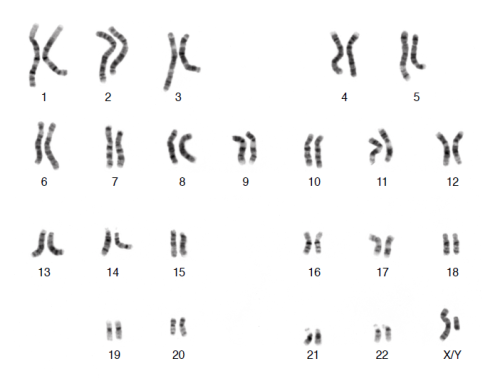With hundreds of thousands of living species how can there be different numbers of chromosomes?
1 Answer
Having different numbers, and kinds, of chromosomes is exactly why there are so many species. There are currently 1.7 million species identified, each with a unique set of chromosomes.
Explanation:
Every species has its own unique set of chromosomes that are different in their genetic makeup (DNA sequence), and therefore their sizes and shapes.
A karyotype shows the number and appearance of chromosomes that are characteristic of a species. Cells are allowed to undergo mitosis to the point of prometaphase or metaphase, at which point they are treated with a chemical that destroys the spindle fibers, which stops mitosis.
A photomicrograph is then taken, and a skilled technologist cuts out each of the chromosomes and arranges them in descending order of size, shape, location of centromere, and banding pattern (made visible by staining the chromosomes with a dye such as Giemsa. They are arranged in pairs of homologous chromosomes, in which one chromosome of a pair comes from the mother and the other chromosome comes from the father. Each homologous pair of chromosomes has the same banding pattern.
You can see by looking at the following karyotypes, that each species has its own unique set of chromosomes. All of the following karyotypes are of males, as they each have an X and a Y chromosome.


HUMAN MALE KARYOTYPE


